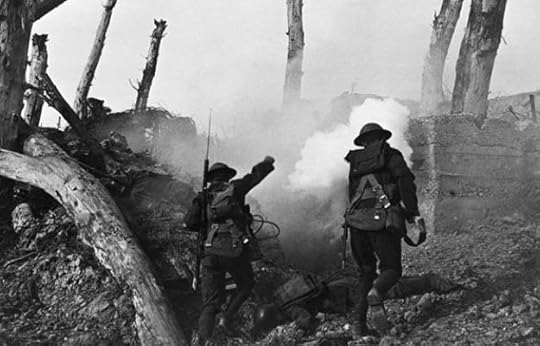Other sad facts I learned from 'Six Weeks': Artillery as the top killer, the hordes of shellshock cases decades later

--By 1917,
so many young
British officers had been killed that "most company commanders were not
more than twenty" years old.
--Despite the images of waves of soldiers being scythed down
by machine gun fire, artillery and mortar shells inflicted the majority (60
percent) of wounds in the British infantry in World War I. Bullets caused 35
percent. (I didn't see numbers on gas
casualties.)
--In 1938, some twenty years after the end of World War I,
there were still 120,000 former British soldiers receiving pensions or awards
for "shellshock" or other psychiatric disabilities -- that is, what he now call
severe PTSD.
--Finally, I read aloud to my wife this passage by a Royal Fusiliers
officer about dealing with a panicky soldier as they sheltered in a shell hole
during a German artillery barrage during the battle of Passchendaele:
I tried to reason with
the boy, but the more I talked top him the more distraught he became, until he
was almost screaming. 'I can't stay here! Let me go! I want my Mum!' So I
switched my tactics, called him a coward, threatened him with court martial and
slapped his face as hard as I could, several times. It had an extraordinary
effect. There was absolute silence in the shell-hole and then the corporal, who
was a much older man, said, ‘I think I can manage him now, sir.' Well, he took
that boy in his arms, just as if he was a small child, and when I crawled back
a little later to see if all was well, they were both lying there asleep and
the corporal still had his arms round the boy . . . .
Thomas E. Ricks's Blog
- Thomas E. Ricks's profile
- 436 followers



